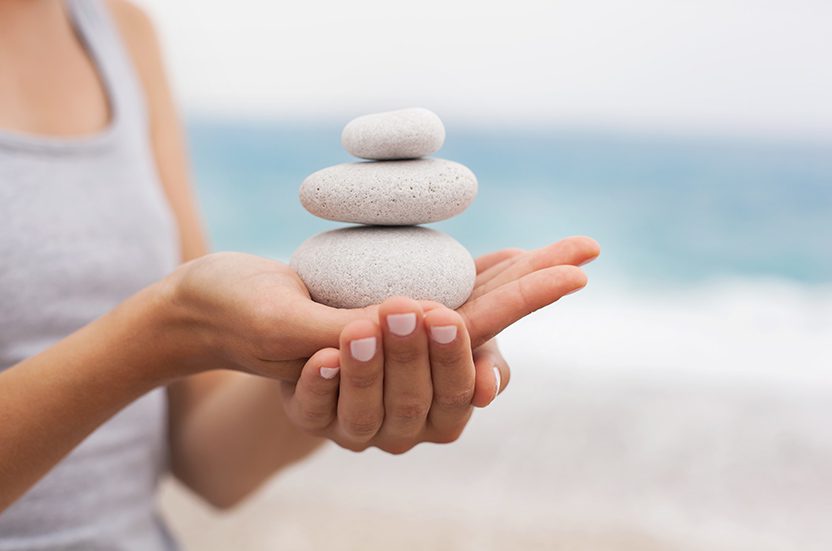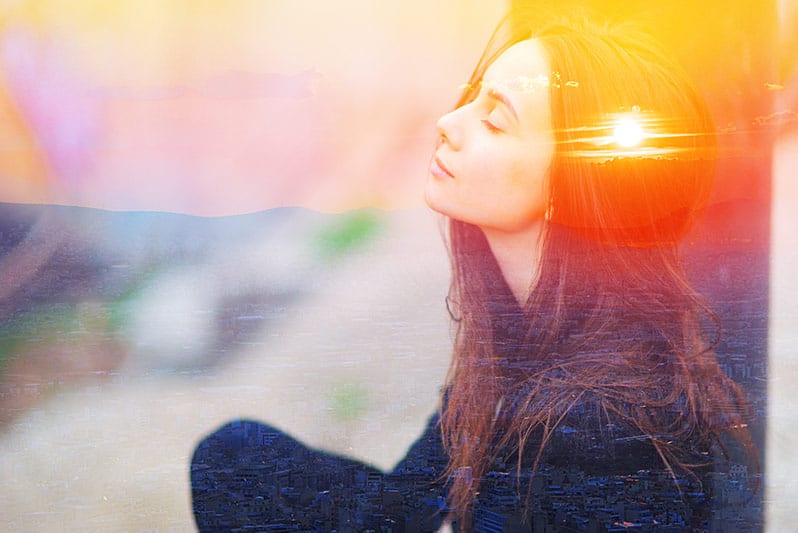Exploring the Mystery – Verse One of the Tao Te Ching
(This post shares my personal thoughts on Verse One of the Tao Te Ching. There are many interpretations to study. These are the messages that most resonate with me.)
Around 12 years ago, I headed to NYC with my mom to attend a Hay House event. I remember riding the Amtrak down from Syracuse and feeling my jaw ache. It had been bothering me for a few weeks. I thought, “How am I ever get rid of this feeling?”
We arrived in the city and settled into our small but stylish room. The following day we headed to the Hay House conference, which was fantastic. It was held at the Javits Center and had a lengthy list of speakers and authors I’ve long admired.
The speaker who stood out the most to me was Wayne Dyer. In his keynote address, he spoke of the meaning of the Tao Te Ching. I can remember listening to him but not being able to take in everything he was saying.
He spoke of ‘The Great Way of the Tao’ and the wisdom of its teaching. I remember thinking, “Huh? I’m in the throes of survival mode (hence the clenched jaw!), and I’m not sure I can adopt this ‘Way’ of being.”
Still, I bought his book Change Your Thoughts, Change Your Life, which sat on my bookshelf for the next several years.

Origin of the Tao Te Ching:
Tao Te Ching translates roughly as “the way of integrity,” – says Damien Walter of The Guardian. “It means to be at peace, aligned with your thoughts, your life, and the world.”
Walter also says, “Two thousand four hundred years after it was composed, we need the Tao Te Ching’s lessons in self-awareness more than ever. Little can be said with absolute certainty about the origins of the Tao Te Ching. Consensus suggests it was written around 400 BC by Laozi. Laozi translates simply as “old master” – a hint that the author’s (or authors’) true name has been lost forever.” The master is also referred to as Lao Tzu by many students.
The Tao Te Ching comprises 81 verses that provide insights into living in harmony with life. The original writing has been translated 1000’s of times by different masters, making it the second most printed book in the world. As in Wayne Dyer’s description above, it’s also referred to as The Way and The Middle Way.
A Core Teaching of Verse One of The Tao Te Ching:
The Tao requires allowing and letting go. It wants us to become aligned with what is – and not fight against it.
Maybe I wasn’t ready to explore the ideas in the book because I was functioning in a very intense, stressed state. I felt I couldn’t let go. I was working so hard to reach my self-imposed goals. I’d say I was in an active state – not an allowing state.
The sheer force of resilience was my copilot. I was moving forward, but to reach even higher, I needed to bring in the sense of allowing and letting go.
At that time, I couldn’t imagine doing it.
Then one day, I finally picked the book up and read Wayne Dyer’s interpretation of Verse One of the Tao Te Ching. The words spoke differently to me than in other texts I’d read. They were soothing. I was finally ready to begin learning about the Tao.
Let’s dive in:
The original symbols comprising the Tao have been translated differently by various students. In this story, I will share Wayne Dyer’s and Stephen Mitchell’s interpretations of Tao Te Ching’s chapter 1.
Verse One of the Tao Te Ching:
Excerpt From: Dr. Wayne W. Dyer. “Change Your Thoughts Change Your Life.” Apple Books.
“The Tao that can be told
is not the eternal Tao.
The name that can be named
is not the eternal name.
The Tao is both named and nameless.
As nameless, it is the origin of all things;
as named, it is the Mother of 10,000 things.
Ever desireless, one can see the mystery;
ever desiring, one sees only the manifestations.
And the mystery itself is the doorway
to all understanding.”
Excerpt From: Stephen Mitchell. “Tao Te Ching.” Apple Books.
“Yet mystery and manifestations
arise from the same source.
This source is called darkness.
Darkness within darkness.
The gateway to all understanding.”

Key Ideas from Wayne Dyer from Verse One of the Tao Te Ching:
“The Tao is both named and nameless.”
In Wayne Dyer’s interpretation, this is a key phrase. It threw me off at first because I thought, “How can something be both?”
It’s bigger than anything we think we know. And it’s bigger than a construct we have in our minds of the great unknown. It’s all.
It has aspects we can understand – the things we can name.
And other aspects can’t be named—the mysterious unknown.
Combined – they represent the Tao.

“Ever desireless, one can see the mystery.”
Wayne Dyer says, “In this reference to the Tao, desireless means trusting, permitting, and allowing.”
What does desireless mean? It’s the place of allowing. Allowing is a powerful place to be because it goes beyond thinking. To qualify, you need to trust.
Allowing is a great act of faith. Especially when you’ve been hurt and this world feels dangerous and threatening. (Hello! Tension in the jaw over here.)
Are you allowing it?
You’re not if you’re saying things like, “This shouldn’t be happening. I don’t want this in my life.
I should be here. No, I should be there. This entire situation shouldn’t be this way.”
Allowing is a superpower. It says, “I have a deal with you, Universe. Part of me is afraid to allow – but I will go past that fear and allow anyway. I can get out beyond myself and my fears and trust in you. I can trust that you have a higher plan for me and that I’m safe no matter what.”
More things to consider:
- Can I allow myself to trust? Trust means letting go and believing fully 100% in a higher power aligned with you.
- Do you know what it feels like to trust?
- Can I allow myself to permit? There is a feeling of openness here. Are you permitting things to be as they are? Or is part of you going to remain stuck in resistance?
- What does it even feel like to allow?
The challenge of letting go:
It’s risky when you’ve been hurt and need to stay safe. But it doesn’t get you anywhere. Trust me! I was the queen of building walls. I created a fortress. It wasn’t until I relaxed and began to trust in life that good things came in.
Maybe that’s one of the most significant challenges – to step out and beyond those disappointments and hurts and into your big, wide heart that knows better and believes in a higher plan.
TIP: One thing that helps me is focusing on the exhale. When you allow yourself to exhale fully, you’re letting go. When you exhale, you’re allowing your breath to flow out. Breathing itself is such a powerful metaphor for this Verse. Half of the breath – the inhale – is active. The other half – the exhale – is relaxed. It’s the balance of the two that creates harmony. We need both – in equal measure.

“When desiring, you see the manifestations.”
This aspect of Verse One is easier to grasp.
It reminds me of a vision board.
You can identify your desire and recognize it when it comes to fruition – the manifestation of it.
But your desires come from nothingness, just like their manifestation comes from nothingness. Both together form the magic of the Tao.
Where are you on the scale of desiring versus allowing?
Wayne Dyer says, “Decide to do the Tao (or practice the Way) at that moment by turning inward with curiosity about where you are on the continuum between desire and allowing.”
This concept is so big! Desiring and allowing exist on two opposite ends of the spectrum.
Are you desiring things 90% of the time and allowing only 10%? (This would be about right for me – especially those years ago at the conference).
Many of us have to move towards allowing. Find out where you are and try to embrace the two ends of the spectrum.
Questions to ask yourself:
- When you find yourself in a frustrated, irritated state of mind, can you pause to look inward? Can you catch yourself from reacting and instead move into a greater intelligence that accepts all that is?
- Throughout the day, can you practice saying yes to what is? Can you allow things to be as they are?
- Can you consider the idea of a loving, kind universe that’s working on your behalf to provide the highest outcomes for you at all times?
Right now, there are many reasons to feel frustrated and triggered. Even when talking about the vaccination issue in this country. Do you think you are highly reactive when you hear people speaking about their position when it’s different than yours? I know I have.
This is a good time to take a breath and go deeper into the place of allowing. Allow others to have their view. By shifting into this state, you may feel more peace and alignment with the Tao.

“The mystery is the doorway to all understanding.”
No matter how hard I try to understand the way of this world, it is not something I can understand intellectually. It is a mysterious, magical universe. Things are happening all the time that exists beyond our wildest imagination—living in reverence of the mystery in The Way.
It feels uncomfortable to step into the feeling of mystery – may be because our brains are hard-wired to have concrete answers and facts.
Yet, the mystery is the only thing that we know is true.
- Can you name times when you felt the mystery of the Universe in your life?
- Are there synchronicities that can’t be explained any other way?
- Do you experience feelings of awe when you know how magical and mysterious this world is – even for a second? What are some examples?
Now, from Stephen Mitchell’s interpretation:
“Darkness within darkness. The gateway to all understanding.”
So many teachings refer to this sense of darkness and emptiness. Eckhart Tolle calls it inner spaciousness. He describes it as vast beyond comprehension. Dr. Joe Dispenza calls it the void. And Abraham Hicks calls it the vortex. Maybe it’s another word for “the peace that surpasses all understanding.”
This darkness and spaciousness are where the mystery lives.
How can you bring that into your daily life?
Practicing daily meditation. Here is one of my favorites:
Practice stillness. Feel the sense of mystery in your everyday life. Step into the mystery even for a moment or two throughout the day—look out at the stars and the moon at night.

I hope you liked this discussion about Verse One of the Tao Te Ching!
Please forward it to someone you know who might enjoy studying alone.
I’ll be back with Verse Two soon.






After reading this, I am definitely going to pick this book up! I have a huge problem with trust. I see the world is suspicious. I had an abusive childhood and believe that is why I see the world this way. And I’ve had abusive adult relationships.